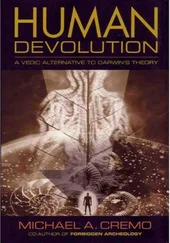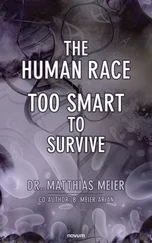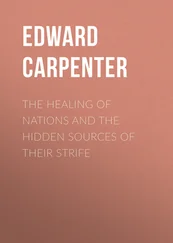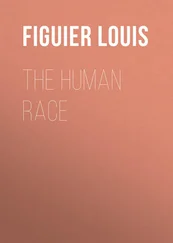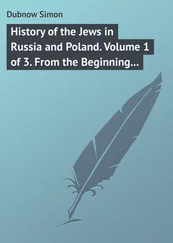Michael Cremo - Forbidden Archeology - The Hidden History of the Human Race
Здесь есть возможность читать онлайн «Michael Cremo - Forbidden Archeology - The Hidden History of the Human Race» весь текст электронной книги совершенно бесплатно (целиком полную версию без сокращений). В некоторых случаях можно слушать аудио, скачать через торрент в формате fb2 и присутствует краткое содержание. Год выпуска: 1992, ISBN: 1992, Издательство: Torchlight Publishing, Жанр: Старинная литература, на английском языке. Описание произведения, (предисловие) а так же отзывы посетителей доступны на портале библиотеки ЛибКат.
- Название:Forbidden Archeology: The Hidden History of the Human Race
- Автор:
- Издательство:Torchlight Publishing
- Жанр:
- Год:1992
- ISBN:9780892132942
- Рейтинг книги:4 / 5. Голосов: 1
-
Избранное:Добавить в избранное
- Отзывы:
-
Ваша оценка:
- 80
- 1
- 2
- 3
- 4
- 5
Forbidden Archeology: The Hidden History of the Human Race: краткое содержание, описание и аннотация
Предлагаем к чтению аннотацию, описание, краткое содержание или предисловие (зависит от того, что написал сам автор книги «Forbidden Archeology: The Hidden History of the Human Race»). Если вы не нашли необходимую информацию о книге — напишите в комментариях, мы постараемся отыскать её.
Forbidden Archeology: The Hidden History of the Human Race — читать онлайн бесплатно полную книгу (весь текст) целиком
Ниже представлен текст книги, разбитый по страницам. Система сохранения места последней прочитанной страницы, позволяет с удобством читать онлайн бесплатно книгу «Forbidden Archeology: The Hidden History of the Human Race», без необходимости каждый раз заново искать на чём Вы остановились. Поставьте закладку, и сможете в любой момент перейти на страницу, на которой закончили чтение.
Интервал:
Закладка:
Richard Thompson and I are members of the Bhaktivedanta Institute, a branch of the International Society for Krishna Consciousness that studies the relationship between modern science and the world view expressed in the Vedic literature. This institute was founded by our spiritual master, His Divine Grace A. C. Bhaktivedanta Swami Prabhupada, who encouraged us to critically examine the prevailing account of human origins and the methods by which it was established. From the Vedic literature, we derive the idea that the human race is of great antiquity. To conduct systematic research into the existing scientific literature on human antiquity, we expressed the Vedic idea in the form of a theory that various humanlike and apelike beings have coexisted for a long time.
That our theoretical outlook is derived from the Vedic literature should not disqualify it. Theory selection can come from many sources—a private inspiration, previous theories, a suggestion from a friend, a movie, and so on. What really matters is not a theory’s source but its ability to account for observations.
Our research program led to results we did not anticipate, and hence a book much larger than originally envisioned. Because of this, we have not been able to develop in this volume our ideas about an alternative to current theories of human origins. We are therefore planning a second volume relating our extensive research results in this area to our Vedic source material.
Given their underlying purpose, Forbidden Archeology and its forthcoming companion volume may therefore be of interest to cultural and cognitive anthropologists, scholars of religion, and others concerned with the interactions of cultures in time and space.
At this point, I would like to say something about my collaboration with Richard Thompson. Richard is a scientist by training, a mathematician who has published refereed articles and books in the fields of mathematical biology, remote sensing from satellites, geology, and physics. I am not a scientist by training. Since 1977, I have been a writer and editor for books and magazines published by the Bhaktivedanta Book Trust.
In 1984, Richard asked his assistant Stephen Bernath to begin collecting material on human origins and antiquity. In 1986, Richard asked me to take that material and organize it into a book.
As I reviewed the material provided to me by Stephen, I was struck by the very small number of reports from 1859, when Darwin published The Origin of Species , until 1894, when Dubois published his report on Java man. Curious about this, I asked Stephen to obtain some anthropology books from the late nineteenth and early twentieth centuries. In these books, including an early edition of Boule’s Fossil Men, I found highly negative reviews of numerous reports from the period in question. By tracing out footnotes, we dug up a few samples of these reports. Most of them, by nineteenth-century scientists, described incised bones, stone tools, and anatomically modern skeletal remains encountered in unexpectedly old geological contexts. The reports were of high quality, answering many possible objections. This encouraged me to make a more systematic search. Digging up this buried literary evidence required another three years. Stephen Bernath and I obtained rare conference volumes and journals from around the world, and together we translated the material into English. The results of this labor provided the basis for Chapters 2–6 in Forbidden Archeology.
After I reviewed the material Stephen gave me about the Peking man discoveries, I decided we should also look at recent hominid finds in China. While going through dozens of technical books and papers, I noticed the phenomenon of morphological dating. And when I reviewed our African material, I encountered hints of the dissenting view regarding Australopithecus . My curiosity about these two areas also led to a fruitful extension of our original research program.
Writing the manuscript from the assembled material took another couple of years. Throughout the entire period of research and writing, I had almost daily discussions with Richard about the significance of the material and how best to present it. Richard himself contributed most of Appendix 1, the discussion of the uranium series dating of the Hueyatlaco tools in Chapter 5, and the discussion of epistemological considerations in Chapter 1. The remainder of the book was written by me, although I relied heavily on research reports supplied by Stephen Bernath for Chapter 7 and the first part of Chapter 9, as well as Appendix 2. Stephen obtained much of the material in Appendix 2 from Ron Calais, who kindly sent us many Xeroxes of original reports from his archives.
In this second printing of the first edition of Forbidden Archeology, we have corrected several small errors in the original text, mostly typographical. The account of a wildman sighting by Anthony B. Wooldridge, originally included in Chapter 10, has been deleted because we have since learned that the author has retracted his statements.
Richard and I are grateful to our Bhaktivedanta Institute colleagues and the other reviewers who read all or part of the manuscript of Forbidden Archeology . We have incorporated many, but not all, of their suggestions. Full responsibility for the content and manner of presentation lies with us.
Virginia Steen-McIntyre was kind enough to supply us with her correspondence on the dating of the Hueyatlaco, Mexico, site. We also had useful discussions about stone tools with Ruth D. Simpson of the San Bernardino County Museum and about shark teeth marks on bone with Thomas A. Deméré of the San Diego Natural History Museum.
I am indebted to my friend Pierce Julius Flynn for the continuing interest he has displayed in the writing and publication of Forbidden Archeology . It is through him that I have learned much of what I know about current developments in the social sciences, particularly semiotics, the sociology of knowledge, and postmodern anthropology.
This book could not have been completed without the varied services of Christopher Beetle, a computer science graduate of Brown University, who came to the Bhaktivedanta Institute in San Diego in 1988. He typeset almost all of the book, going through several revisions. He also made most of the tables, processed most of the illustrations, and served as a proofreader. He made many helpful suggestions on the text and illustrations, and he also helped arranged the printing.
For overseeing the design and layout, Richard and I thank Robert Wintermute. The illustrations opposite the first page of the introduction and in Figure 11.11 are the much-appreciated work of Miles Triplett. The cover painting is by Hans Olson. David Smith, Sigalit Binyaminy, Susan Fritz, Barbara Cantatore, and Michael Best also helped in the production of this book.
Richard and I would especially like to thank the international trustees of the Bhaktivedanta Book Trust, past and present, for their generous support for the research, writing, and publication of this book. Michael Crabtree also contributed toward the printing cost of this book.
Finally, we encourage readers to bring to our attention any additional evidence that may be of interest, especially for inclusion in future editions of this book. We are also available for interviews and speaking engagements.
Correspondence may be addressed to us at Bhaktivedanta Book Publishing, Inc., 3764
Watseka Avenue, Los Angeles, CA 90034.
Michael A. Cremo Alachua, Florida April 24, 1995
Part I
A nomalous E vidence
The Song of the Red Lion
One evening in 1871, an association of learned British gentlemen, the Red lions, gathered in Edinburgh, Scotland, to feed happily together and entertain each other with humorous songs and speeches. Lord Neaves, known well for his witty lyrics, stood up before the assembled lions and sang twelve stanzas he had composed on “The origin of species a la Darwin.” Among them:
Читать дальшеИнтервал:
Закладка:
Похожие книги на «Forbidden Archeology: The Hidden History of the Human Race»
Представляем Вашему вниманию похожие книги на «Forbidden Archeology: The Hidden History of the Human Race» списком для выбора. Мы отобрали схожую по названию и смыслу литературу в надежде предоставить читателям больше вариантов отыскать новые, интересные, ещё непрочитанные произведения.
Обсуждение, отзывы о книге «Forbidden Archeology: The Hidden History of the Human Race» и просто собственные мнения читателей. Оставьте ваши комментарии, напишите, что Вы думаете о произведении, его смысле или главных героях. Укажите что конкретно понравилось, а что нет, и почему Вы так считаете.

